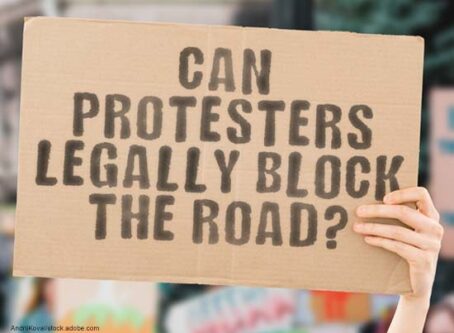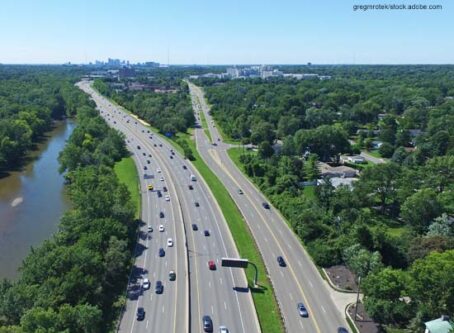Report: Truckers paying unfair share of congestion costs
Two recent reports reveal that congestion nationwide is getting worse, with one report showing truckers are paying more than their fair share of costs incurred by traffic.
Recently, the Texas A&M Transportation Institute released its Urban Mobility Report, which takes a deep dive into congestion in nearly 500 urban areas. Around the same time, the National League of Cities released its reported titled Making Space: Congesting Pricing in Cities.
With New York City scheduled to launch the nation’s first congestion pricing initiative and Congress still kicking the infrastructure funding can down the road, the message is clear: Traffic is getting worse.
Urban Mobility Report: Truckers paying more than fair share
In its report, the Texas A&M Transportation Institute concluded that traffic congestion has reached the highest measured levels in most U.S. cities. Even worse, everything done to alleviate congestion has fallen flat.
“Congestion is back to its growth pattern,” the report states. “The 8- to 10-year growing economy has brought traffic congestion to the highest measured levels in most U.S. cities. The myriad possible solutions – from more highways, streets and public transportation; better traffic operations; more travel options; new land development styles; advanced technology – have not worked.”
This is costing truckers more than their fair share. According to the report, congestion cost is estimated at $166 billion for all motorists, caused by an extra 8.8 billion hours of travel time and 3.3 billion gallons of extra fuel. However, trucks account for $21 billion. At 12% of total congestion costs, that’s more than the 7% of traffic comprised of the trucks on the roads.
Further, the $21 billion estimate “does not include extra costs borne by private companies that build additional distribution centers, buy more trucks and build more satellite office centers to allow them to overcome the problems caused by a congested and inefficient transportation network,” according to the report.
In fact, congestion costs for truckers increased significantly more than other factors that were measured in the study. From 2012 to 2017, congestion costs for trucks went from $14.6 billion to $20.5, a five-year change of 40%. Adjusted to 2017 dollars, the cost of congestion for trucks in 1982 was $1.9 billion, making 2017’s cost an increase of nearly 1,000% over 35 years.
Congestion cost in general accounts for the second-highest five-year change at 17%. Yearly delays per auto commuters increased 15% over five years, and travel delay for all motorists increased by 14%. Those costs only include delay and fuel cost calculations. Other factors such as uncertain/longer delivery times, missed meeting and business relocations are not included and likely add to congestion costs, the report states. In order to arrive on time for trips using the freeways, motorists had to allow 34 minutes to make a trip that should take only 20 minutes in light traffic, the report found.
Although employment numbers from 2016 to 2017 fell below numbers from previous years, they were still enough to cause congestion growth. From 2016 to 2017, the economy added 1.9 million jobs, less than the more than 2.3 million jobs in four of the previous five years. Nonetheless, that is still nearly 2 million people needing to get to and from work, thereby exacerbating congestion. “Each region should use the combination of strategies that match its goals and vision,” the reports states. “There is no panacea. And the decade-long recovery from economic recession has proven that the problem will not solve itself.”
Congestion pricing
One possible solution to extreme congestion in concentrated areas is to charge motorists entering those zones, also known as congestion pricing. According to a National League of Cities report, this problem is not limited to larger metropolitans like New York City.
The idea is simple, yet controversial as well. According to the NLC report, “with variable pricing, the goal is for congestion charges to rise in accordance with increased traffic congestion, thereby pushing some drivers off the road and making traffic flow more smoothly.” In other words, the busier the area gets, the more it’s going to cost a motorist to enter. Motorists will have less incentive to enter high-traffic areas for less important activities during peak hours.
According to the report, driving is the main mode of commuting regardless of size. In cities with a population of less than 50,000, 91% drive to work. However, even in large cities of more than 500,000 people, more than three-quarters of workers drive to work. In fact, New York City is the only city where the majority of workers commute by public transit, walking or biking.
Although congestion pricing may seem more feasible for large cities like New York City and Los Angeles, the National League of Cities suggests that growing cities should also consider congestion pricing. More specifically, the report notes that southern cities with populations of more than 50,000 are rapidly growing, particularly cities in Texas and North Carolina.
The report also warns of increased traffic as autonomous cars become more prevalent.
“Once Uber and others roll out autonomous vehicle fleets, calling a car will be cheaper and more competitive, and a potential burden on our streets,” the report states.
Additionally, when cars become fully self-driving, they are likely to continue driving after dropping off its owner, the reports points out. Rather than parking, self-driving cars may circle around the area or go somewhere to pick up a co-owner of the vehicle. Congestion pricing could address this increase in traffic from self-driving vehicles.
New York City
Several cities worldwide have used congestion pricing, including London, Stockholm and Singapore. To date, congestion pricing has not been implemented in the United States. In 2021, that will change in New York City.
In March, New York passed a bill that authorizes the Triborough Bridge and Tunnel Authority to install congestion pricing tolling in Manhattan’s Central Business District, beginning 2021.
Few details are known, as legislation did not specify how congestion pricing will work. Legislation did establish a six-person committee called the Traffic Mobility Review Board. That committee is scheduled to release a pricing recommendation sometime next year.
What is known is where the congesting pricing toll will be established. Motorists entering Manhattan below 60th Street will be charged. Exceptions include motorists traveling on the West Side Highway, FDR Drive and the Battery Park underpass.
Motorists will only be charged once per day. People who live in the congestion zone and earn less than $60,000 a year will receive credits.
Revenue from congestion pricing is expected to be around $1 billion annually. Money generated could only be used by Metropolitan Transportation Authority projects, according to the bill referred to as the Traffic Mobility Act.
Legislation establishes only a few exemptions, including emergency vehicles and authorized vehicles transporting a person with disabilities. As of publication time, trucks and other delivery vehicles are not exempt but applications for exemptions will be accepted.









